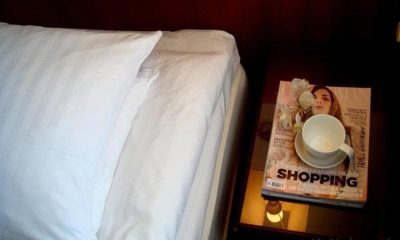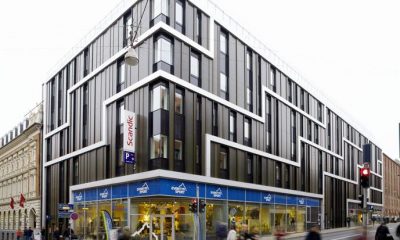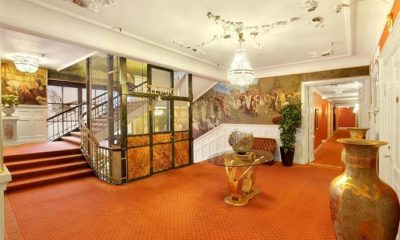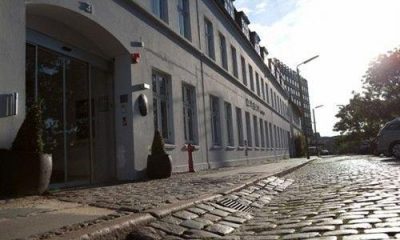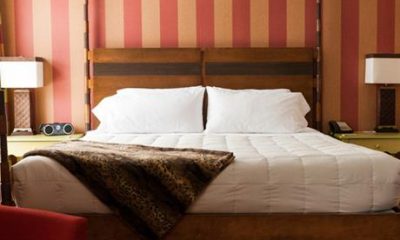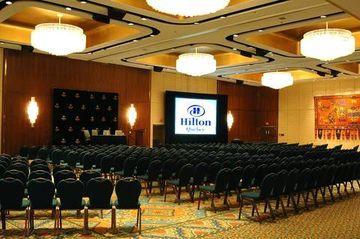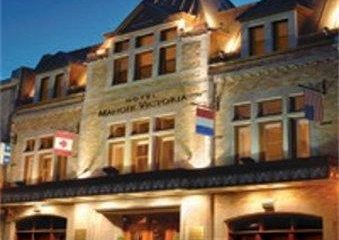Visit to London
London’s 18 Most Magical Harry Potter Sites
- /home/discountdealsonh/public_html/wp-content/plugins/mvp-social-buttons/mvp-social-buttons.php on line 27
https://www.discountdealsonhotels.com/wp-content/uploads/2017/08/harry-potter-london-hero.jpg&description=London’s 18 Most Magical Harry Potter Sites', 'pinterestShare', 'width=750,height=350'); return false;" title="Pin This Post">
- Share
- Tweet /home/discountdealsonh/public_html/wp-content/plugins/mvp-social-buttons/mvp-social-buttons.php on line 69
https://www.discountdealsonhotels.com/wp-content/uploads/2017/08/harry-potter-london-hero.jpg&description=London’s 18 Most Magical Harry Potter Sites', 'pinterestShare', 'width=750,height=350'); return false;" title="Pin This Post">

For every Harry Potter fan, a trip to London is a dream come true, and with the Cursed Child play premiering on July 30, there’s never been a better time to head to London and experience the magic yourself. From the iconic Platform 9 ¾ to the lesser-known pedestrian streets, here are the top Harry Potter sites in London.—Ellin Stein

St. Paul’s Cathedral
There are many reasons to visit Sir Christopher Wren’s beautiful English Baroque masterpiece, but for Potter fans one of the main points of interest will be the spectacular spiral Geometric Staircase (also known as the Dean’s Stair) in the cathedral’s southwest tower. Recognizable from Harry Potter and the Prisoner of Azbakan, this is where students trudge up the stone steps towards Professor Trelawney’s Divination classes held in a classroom atop a Hogwart’s tower. It was also used in Harry Potter and the Goblet of Fire as the Turris Magnus staircase.
Nearest Tube: St. Paul’s
PLAN YOUR TRIP: Visit Fodor’s London Guide

Leadenhall Market
This beautifully preserved example of a Victorian covered market, noted for its ornate roof painted in green, maroon, and cream over a cobblestone floor, portrayed Diagon Alley in the film Harry Potter and the Sorcerer’s Stone. You can still see wrought iron hooks above the contemporary restaurants, boutiques, and gift shops, a legacy of its past as a meat market (the current market was designed in 1881 but there has been a market on the site since the fourteenth century). An optician’s shop called The Glass Ball, located in Bull’s Head Passage, an alley off the market’s Gracechurch Street entrance, was used as the exterior of the Leaky Cauldron in the same film.
Nearest Tube: Monument
PLAN YOUR TRIP: Visit Fodor’s London Guide

Borough Market
For Harry Potter and the Prisoner of Azkaban, the producers moved the entrance of the Leaky Cauldron to this location. The brickwork and door that can be seen when the Knight Bus drops Harry off has vanished. In real life, No. 9 is a flower shop with a slightly wider entrance. Borough Market is a must-visit for foodies as well as Potterites, filled with stalls selling organic and farm-sourced meat and produce as well as artisanal baked goods and condiments. There are also stalls serving delicious street food.
Nearest Tube: Southwark
PLAN YOUR TRIP: Visit Fodor’s London Guide

Lambeth Bridge
The Knight Bus, a triple-height purple version of the classic double-decker Routemaster, is both invisible to Muggles and remarkably able to dodge obstacles as it rescues stranded members of the wizarding community at terrifying speeds. In the film version of Harry Potter and the Prisoner of Azkaban, Lambeth Bridge, located just west of the Houses of Parliament, is where the Knight Bus squeezes between two more conventional London buses as it transports Harry to the Leaky Cauldron. The bridge is painted red, to symbolize the crimson upholstery on the House of Lords’ benches (Westminster Bridge, to the east of Parliament, is painted green for the House of Commons). On the south side of the bridge you’ll find the Garden Museum and Lambeth Palace.
Nearest Tube: Westminster
PLAN YOUR TRIP: Visit Fodor’s London Guide

Great Scotland Yard
The name of this street might ring a bell with fans of that other world-famous British fictional character, Sherlock Holmes. It was here that the rear entrance to the former headquarters of London’s Metropolitan Police was located, and “Scotland Yard” became shorthand for the institution. However, viewers of Harry Potter and the Order of the Phoenix will recognize it as the site of the Visitor’s Entrance to the Ministry of Magic, although the actual entrance was via a phone box located at the corner of Scotland Place. Scotland Place is still there (but not the phone box, which was only a prop) and in fact makes an appearance in Harry Potter and the Deathly Hallows Pt. 1 when Harry, Hermione, and Ron disguise themselves as Ministry of Magic employees.
Nearest Tube: Embankment
PLAN YOUR TRIP: Visit Fodor’s London Guide

London Zoo Reptile House
The somewhat larger London Zoo was used in the film of Harry Potter and the Sorcerer’s Stone as Little Whinging Zoo, where Harry first discovers he has magical powers when he strikes up a conversation with a boa constrictor from Brazil (who in the movie version became a Burmese python). There’s a plaque by the tank that portrayed the talking snake’s residence. However, it’s currently occupied by a non-speaking, highly venomous black mamba, so don’t get too friendly.
Nearest Tube: Regent’s Park
PLAN YOUR TRIP: Visit Fodor’s London Guide

St. Pancras
Thanks to a drab 1970s extension, the exterior of King’s Cross station was deemed too un-magical, so it was impersonated in the film version of Harry Potter and the Chamber of Secrets by its next door neighbor, St. Pancras International, a Victorian neo-Gothic fantasia with wizardly turrets. In the film, Ron Weasley’s Ford Anglia takes off from a part of the station that has been turned into a Renaissance Hotel. In an interview with the BBC, Rowling confessed that when she was writing the book she had confused King’s Cross with yet another London station, Euston, and in fact had Euston’s Platforms 9 and 10 in mind (she was living in Manchester at the time so she couldn’t check.)
Nearest Tube: King’s Cross
PLAN YOUR TRIP: Visit Fodor’s London Guide

Charing Cross
This major thoroughfare appears in several books: Harry walks down the street with Hagrid in Harry Potter and the Sorcerer’s Stone, he travels down it on a Knight Bus in Harry Potter and the Prisoner of Azkaban, and Harry Potter and the Half Blood Prince mentions Ministry of Magic cars driving down Charing Cross Road. It is here that the Leaky Cauldron wizards’ pub and inn, which serves as a gateway between the Muggle world and Diagon Alley, is located. These days the second-hand bookstores for which the road was known have been largely replaced by coffee shops and restaurant chains, though the famous Foyle’s remains a notable exception.
Nearest Tube: Charing Cross.
PLAN YOUR TRIP: Visit Fodor’s London Guide

Tower Bridge
One of the city’s most recognizable and most filmed landmarks (it has also turned up in Mission Impossible, Fast and Furious 6, Bridget Jones’s Diary, and The World Is Not Enough, to name a few), the iconic bridge appears in Harry Potter and the Order of the Phoenix when Harry and members of Dumbledore’s Army fly down the Thames, passing other landmarks like the London Eye and Big Ben before swooping under the bridge on their broomsticks. Built in the late nineteenth century, it’s still a working drawbridge that opens for tall vessels.
Nearest Tube: Tower Bridge
PLAN YOUR TRIP: Visit Fodor’s London Guide

Kings Cross
Perhaps the best-known Harry Potter location in London is Platform 9¾, located in King’s Cross, a decidedly muggle-like commuter station. You’ll recognize it by a luggage cart vanishing halfway into a brick wall under a helpful sign that says “Platform 9¾” on the main concourse between the elevator and Platform 9. The departure point for the Hogwarts Express went unnoted until 1999, when the station decided to capitalize on the worldwide fame of the Potter books by installing the plaque and luggage cart in a passageway leading from the main building to an annex before transferring them to a bricked-up arch on the station’s exterior wall. Finally, in 2012, following a major remodeling of the station, the plaque and trolley (now with birdcage and luggage), was moved to the current location. If you still have trouble finding it, look for the adjoining Harry Potter shop, which sells official merchandise.
Nearest Tube: King’s Cross
PLAN YOUR TRIP: Visit Fodor’s London Guide
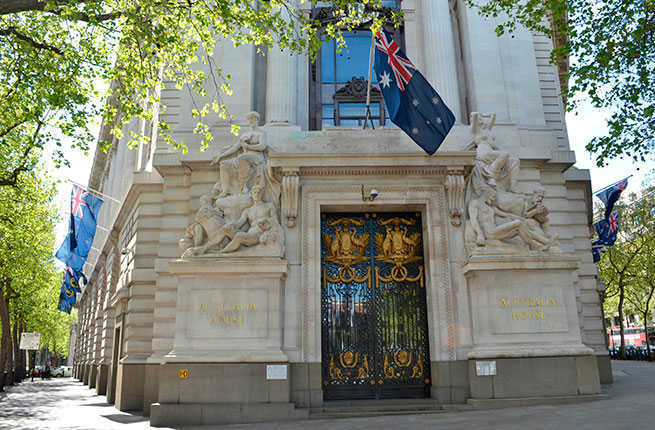
Australia House
A landmark since it opened in 1918, this imposing building on the Strand is home to Australia’s diplomatic mission in the UK. Its equally imposing Exhibition Room (which is not open to the public, though you may be able to poke your head in for a quick look) is so grand it required almost no set dressing when it appeared in the film Harry Potter and the Sorcerer’s Stone as the main hall of Gringott’s Wizarding Bank. A set inspired by Australia House’s interior, although with slight differences, was later built at Leavesden Studios for Harry Potter and the Deathly Hallows, Pt. 2.
Nearest Tube: Temple
PLAN YOUR TRIP: Visit Fodor’s London Guide
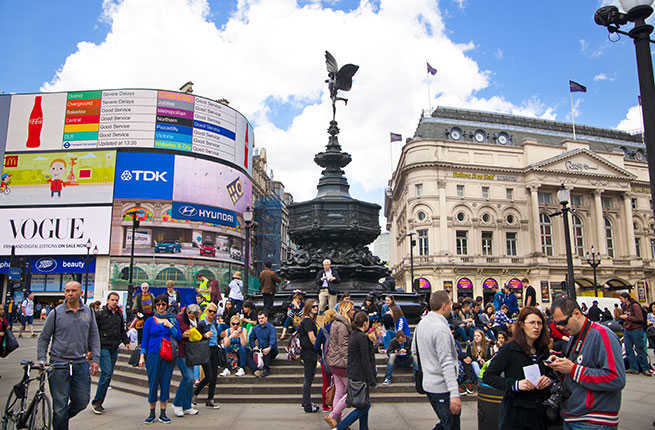
Piccadilly Circus
A major London destination known for its nightlife and theaters, this is where Harry, Hermione, and Ron apparate to in Harry Potter and the Deathly Hallows Pt. 1 while fleeing the Death Eaters after Bill and Fleur’s wedding. In the book version, they actually flee onto Tottenham Court Road Station, another major if less photogenic London hub, where the Luchino cafe is located.
Nearest Tube: Piccadilly Circus
PLAN YOUR TRIP: Visit Fodor’s London Guide

Millennium Bridge
The newest of London’s bridges, this modernist steel pedestrianized crossing portrayed the Brockdale Bridge that was dramatically destroyed during a Death Eater attack in Harry Potter and the Half-Blood Prince. Fortunately, the real bridge is in fine shape and provides nice stroll between Tate Modern and St. Paul’s cathedral.
Nearest Tube: Mansion House
PLAN YOUR TRIP: Visit Fodor’s London Guide

Cecil Court
This charming pedestrianized street off Charing Cross Road is full of quirky Victorian-era shops specializing in rare books, maps, and antiques. It is widely believed to be the inspiration for Diagon Alley and even has a shop that pre-dates the books called “The Witch’s Ball”.
Nearest Tube: Charing Cross
PLAN YOUR TRIP: Visit Fodor’s London Guide

Surbiton Station
This quintessential 1930s art deco suburban station about 10 miles southwest of central London provided the location for the scene in Harry Potter and the Half-Blood Prince where Harry is reading The Daily Prophet in the station’s cafe (in real life a waiting room) on Platform 1 when he spies Dumbeldore on Platform 3. It is from the bottom of the stairs on this platform that the headmaster whisks Harry out of the muggle world. The filmmakers may have been making a sly joke since Surbiton was immortalized in the classic British sitcom The Good Life as the epitome of a comfortable, conformist bedroom community.
PLAN YOUR TRIP: Visit Fodor’s London Guide

Horse Guards Avenue
This is the heart of official, ceremonial London. If you look back along Horse Guards Avenue towards Whitehall, you will see a statue of the Eighth Duke of Devonshire. For the filming of Harry Potter and the Deathly Hallows Pt. 1, a “gentleman’s toilet” was erected in the area behind the statue, opposite the entrance to Britain’s Ministry of Defense. This, of course, was no ordinary toilet but the staff entrance to the Ministry of Magic, which Ron, Hermione, and Harry entered in disguise.
Nearest Tube: Charing Cross
PLAN YOUR TRIP: Visit Fodor’s London Guide

Westminster Station
This is where Mr. Weasley runs into difficulties using his ticket at the exit barrier en route to the Ministry of Magic with Harry in Harry Potter and the Order of the Phoenix. The station serves the Houses of Parliament, Westminster Abbey, and several other main tourist attractions.
PLAN YOUR TRIP: Visit Fodor’s London Guide
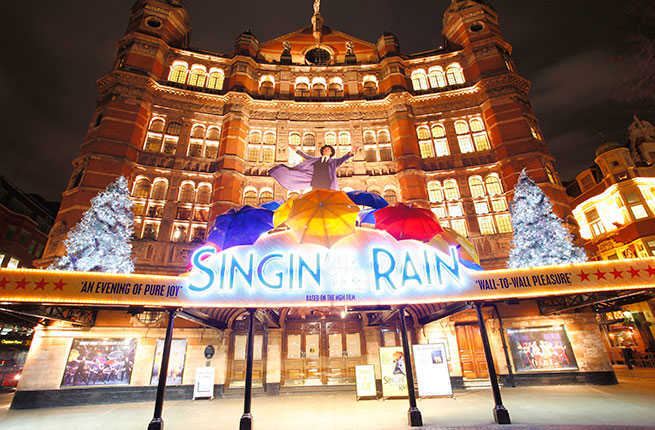
Palace Theater
The Victorian glass canopy of this West End theater dates back to 1891 and has been decorated with suitably witchy additions for the run of Harry Potter and the Cursed Child, Parts 1 and 2. Created by Jack Thorne in collaboration with J.K. Rowling, the play, which opens on July 30, picks up the story of Harry, Hermione, and Ron 19 years after the end of the last book. Demand for tickets is astronomical, but every Friday the show’s website will release 40 tickets in a special promotion called “The Friday Forty”.
Nearest Tube: Leicester Square, Tottenham Court Road
PLAN YOUR TRIP: Visit Fodor’s London Guide
Visit to London
London’s 15 Best Pubs
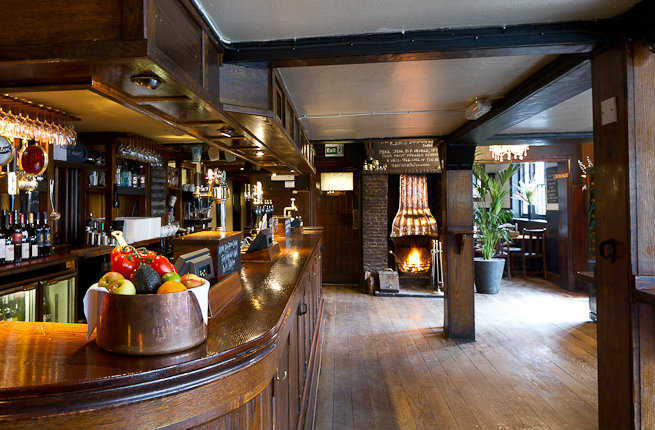
Depending on how you define London’s boundaries, there are believed to be as many as 7,000 pubs in the sprawling metropolis. That’s a whole lot of places to get a proper pint, so we’ve selected 15 of our favorite spots. With so many pubs to choose from, we couldn’t include every gem on our list, so we’ve focused on standouts with a timeless atmosphere rather than trendy gastropubs and craft-beer bars. From Hampstead to Wimbledon, here are the 15 best pubs in London.
by Abbey Chase

Ye Olde Cheshire Cheese
Blackfriars
You can’t turn around in London without bumping into a centuries-old pub, but Ye Olde Cheshire Cheese has a certain well-worn patina that not many can match. A pub has stood on the spot since 1538 (though it required substantial rebuilding after the Great Fire of London in 1666) and the vaulted cellars below date back to the 13th century. Ye Olde Cheshire Cheese has become a city landmark, but hasn’t lost any of its charm. There’s a list of every English monarch who has ruled since 1667 beside the door (Charles II was on the throne at the time) and a host of illustrious writers is said to have frequented this London institution at one point or another. Keep in mind that there is more than one pub with the “Cheshire Cheese” moniker, so be sure to visit the original at 145 Fleet Street.
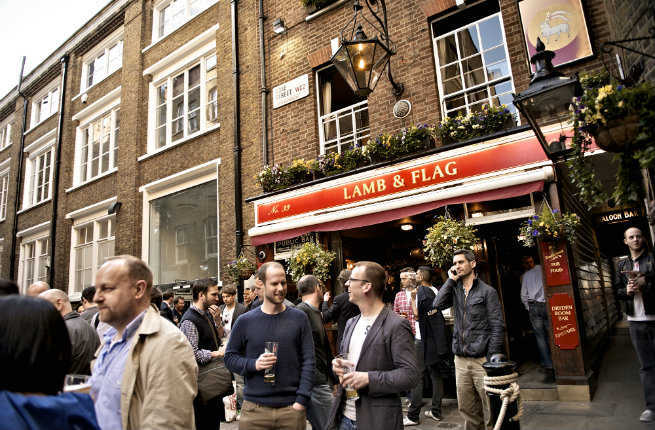
Lamb & Flag
Covent Garden
Tucked in a back alley, Lamb & Flag is the kind of place you’ll find only if you’re already looking for it. Despite its proximity to the crowded, though still charming, Covent Garden, this pub is refreshingly kitsch-free and has stood on the same site since 1772, and counted Charles Dickens as one of its regulars. You’ll likely have to politely shove your way to the bar, but the centuries-old wall hangings, worn wooden bar, and authentic charm make Lamb & Flag well worth a visit.

The Spaniards Inn
Hampstead
If you’re staying in central London, the trek to this Hampstead pub can feel like quite a journey, but it doesn’t get much more atmospheric than this. Originally built as a tollbooth at the entrance to the Bishop of London’s estate, The Spaniards Inn is awash in dark oak paneling, lit by a seemingly dangerous open fire in one corner. The pub also has a long literary history; the wooden bench outside proudly declares “Keats enjoyed many an Ale here,” and Spaniards is mentioned in both Dracula and The Pickwick Papers. In the winter, you’ll find a steaming cauldron of mulled wine behind the bar and during the warmer months, enjoy the exceptional cheese board in the garden.
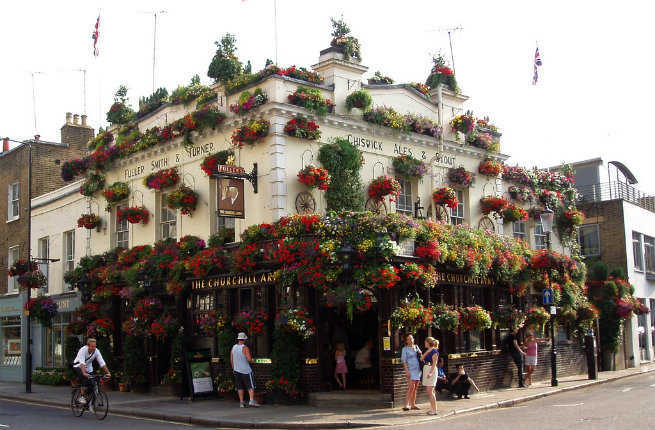
The Churchill Arms
Notting Hill
Of all the pubs in London, The Churchill Arms may have the most distinctive look. Coming down Kensington Church Street, you’ll be able to spot this Notting Hill institution from several blocks away with its floral-covered façade and regal, tiered structure. Once inside, be careful not to knock over any of the hundreds of knickknacks (and a striking amount of Winston Churchill memorabilia) hanging from the walls and ceiling. Ironically, the pub named after the great British leader is in fact an Irish establishment and to add more confusion to the mix, The Churchill Arms houses an unusually good Thai restaurant in the back.
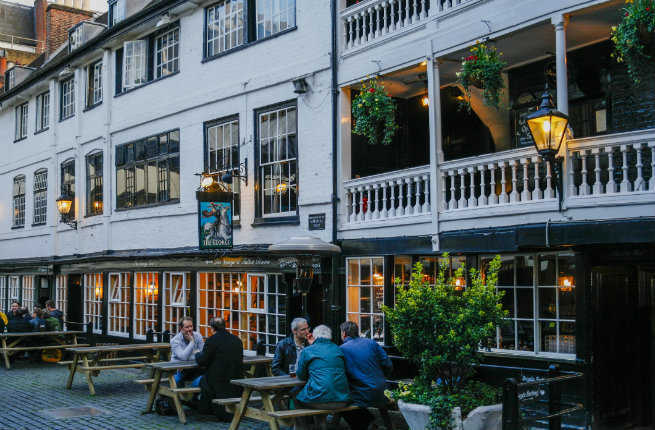
The George Inn
Southwark
A map of London from circa 1543 indicates that the “Gorge” stood on the spot where The George Inn stands today, and though the pub was rebuilt after the London fire, it traces its roots back to medieval times. Now owned by the National Trust, The George Inn continues to serve beer and traditional English fare to Londoners as it has done for hundreds of years in its Southbank location, not three blocks from The Shard, the city’s newest landmark. The final remaining galleried coaching inn in the London, the pub boasts two spacious interior rooms in addition to the Oktoberfest-style lines of picnic tables in the courtyard.
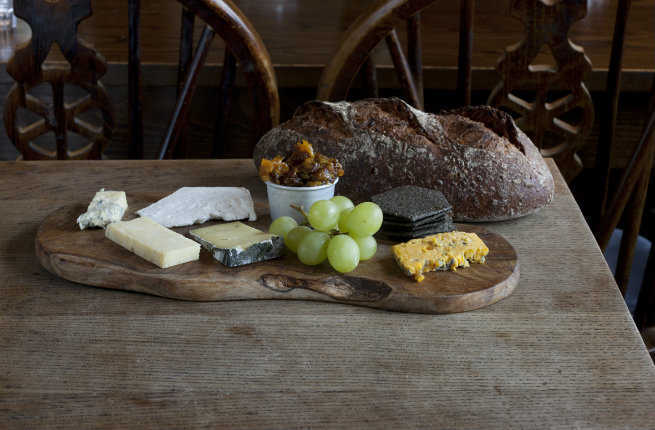
The Mayflower
Rotherhithe
Another of London’s oldest pubs, The Mayflower dates back to 1620 and, not coincidentally, was the site from which the ship of the same name set sail for New England in July of that year (the pub was renamed when it was substantially remodeled in the 1700s). The upstairs room offers a more upscale dining experience, and the downstairs bar and deck overlooking the river make for the perfect drinking environs. If you’re looking for the cheapest pint in the city, you won’t find it here, but the unique atmosphere and great location along the Thames make the price worth it.
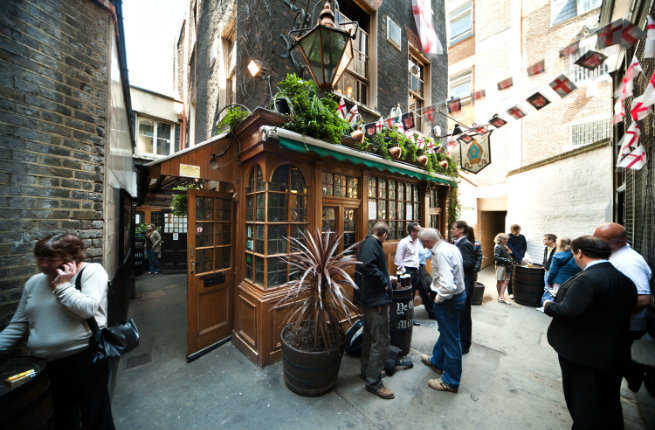
Ye Olde Mitre
Farringdon
Even when sober, finding Ye Olde Mitre can be a bit of a challenge, hidden down a narrow passageway on Ely Court off Holborn. The tavern is wedged between St. Etheldreda’s Church (one of the oldest Catholic churches in England) and Hatton Garden, and has become famous for the cherry tree that stands out front, which Queen Elizabeth I is said to have danced around. Spilling outside the pub’s doors is almost preferable here, as Ye Olde Mitre has the quiet alleyway to itself and has strung mini English flags overhead. Beer steins and pitchers hung on the ceiling give the place a quaint, cluttered feel, and bargoers hoping to find some original fare will be pleased with the tapas-inspired menu.
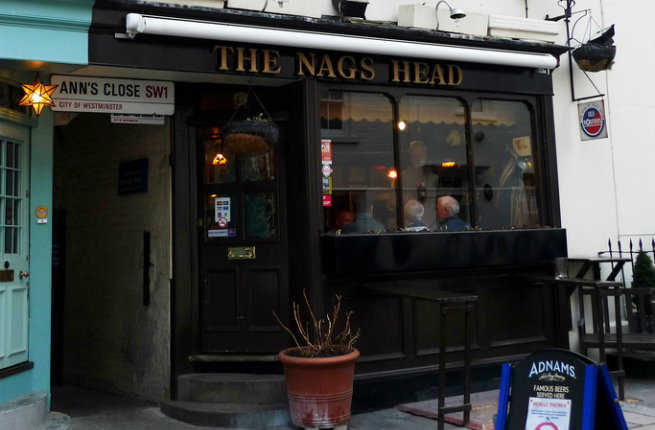
The Nags Head
Belgravia
There are pubs with authentic, old-school charm and then there’s The Nags Head (53 Kinnerton Street). The no-cellphones policy is strictly enforced, you’ll be firmly asked to hang up your coat upon entering, and you won’t find a TV on the premise, though penny arcade games are dotted around the room. Kevin Moran is practically a caricature of a traditional pub owner and the locals who frequent The Nags Head are equally eccentric. The prices are a bit steep, but you’ll be paying for the atmosphere more than the beer.
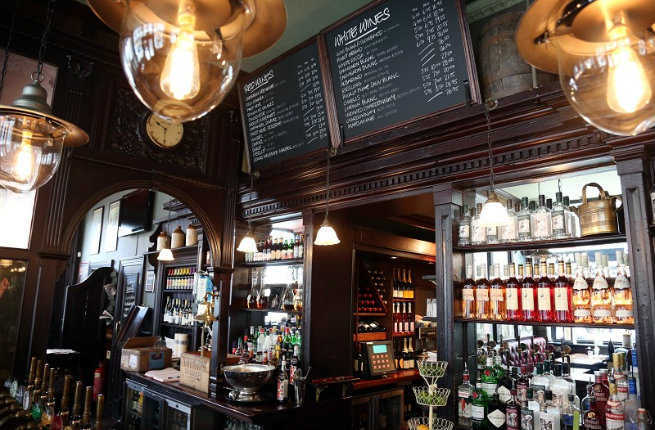
The Flask
Hampstead
The Flask can be something of a mind-bender, no matter how much or how little you’ve had to drink; with two separate entrances and two bars that have no interior connection, finding your way around this historic space can be a bit of a challenge. Originally built with a separate public bar and saloon bar (the former the more modest option), The Flask has maintained its original charm with the addition of a more modern dining room in the back. A perfect blending of the old with the new makes this Hampstead spot (with a surprisingly long wine list) an inviting spot to imbibe, situated along the impossibly quaint Flask Walk a block from the Hampstead Tube station.
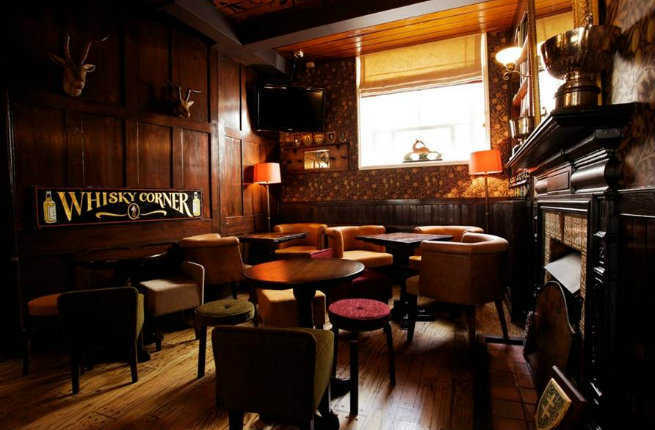
The Antelope
Belgravia
Though found near Sloane Square, one of the most expensive parts of an already pricey city, The Antelope offers up a quintessential English pub atmosphere without emptying your pockets. To boot, the food is exceptional for a pub and the wood-paneled exterior looks particularly inviting on the otherwise quiet, residential street. Looking for something more sophisticated? Head upstairs to the Eaton Room, outfitted with red curtains, stylishly mismatched wooden chairs, and mint-colored paneled walls.
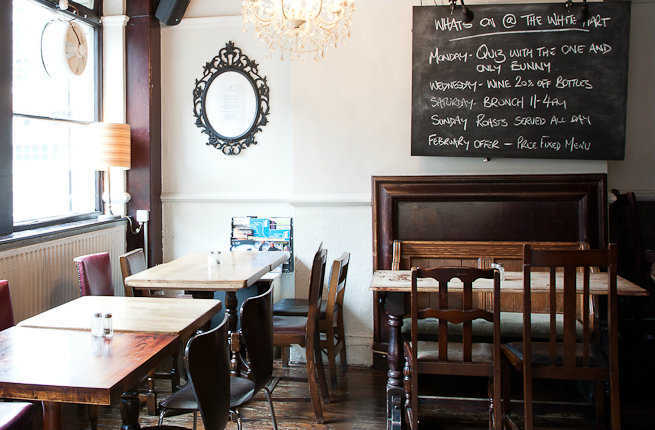
The White Hart
Waterloo
There are a number of pubs in London that bear this name, but when looking for the best neighborhood vibe and a quintessential Sunday roast, head to The White Hart near Waterloo station. Tucked away on a quiet neighborhood street in a refreshingly tourist-free Southbank area, this single-room pub can get crowded with the after-work set, but the endlessly cheery group of locals will more than make up for the lack of seating. The White Hart is tough to beat on a Sunday afternoon; the excellent roast, pile of board games and newspapers, and delicious Bloody Marys make for the ultimate relaxed end to the weekend.
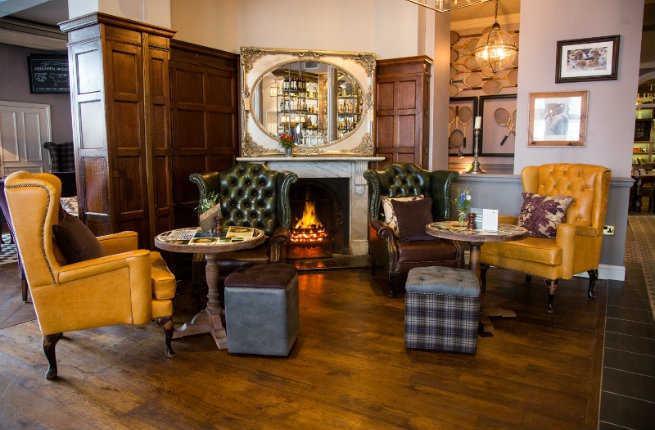
The Dog & Fox
Wimbledon
Just 15 minutes by train from Waterloo station, Wimbledon feels miles from central London with its quiet High Street and wooded Wimbledon Common, where horseback riders, casual golfers, and wellie-clad dog-walkers all lend the park an almost stereotypical English vibe. Fitting of the small-town atmosphere, The Dog & Fox does double-duty as a pub and hotel, not a five-minute walk from the Common. In addition to the usual line-up of Young’s beer, The Dog & Fox also features an extensive cocktail list, best enjoyed on the outdoor patio on a sunny day.
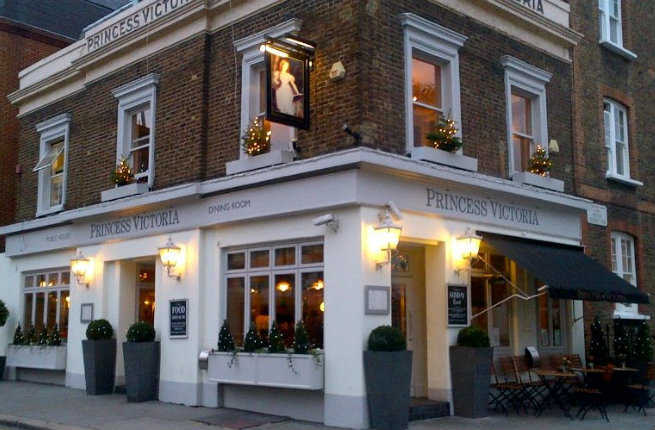
Princess Victoria Kensington
Kensington
While not the most traditional spot on this list, the Princess Victoria Kensington brings a touch of whimsy to the usual pub experience. The neon sign behind the bar lends this pub a slightly dive-y feel, but the small space is still very cozy, without feeling cramped. Head upstairs for a respite from the noisy downstairs bar, and don’t leave without ordering the shockingly good fresh warm bread. Cocktail lovers in particularly will love this spot; the £8 drinks are a ridiculously good deal in London, let alone in the tony Kensington neighborhood.
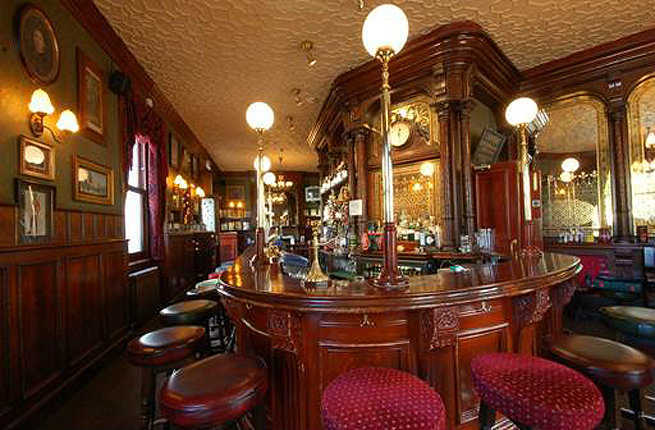
The Victoria
Paddington
This area north of Hyde Park isn’t the busiest corner of the city, which is part of what makes The Victoria so appealing. The menu features standard pub fair, but the food is a cut above what you’ll normally find at the average London drinking hole. The cozy interior is exactly what you’d hope to find in an English pub, with intricate woodwork, antique-y light fixtures, and a fireplace surrounded by well-worn armchairs. Upstairs features a beautiful library, perfect for a more quiet bite.
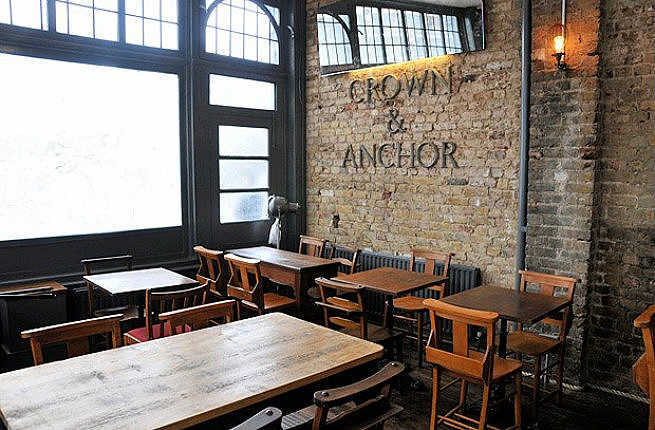
The Crown & Anchor
Brixton
Managing to maintain its traditional English vibe while offering a unique assortment of craft ales, The Crown & Anchor sees tweed suits and ironically clad hipsters come together under one roof. Beer is the star of the show here, but this South London pub doesn’t lack in atmosphere either, with an exposed brick wall along one side and a wall of French windows along the other, with quirky minimalist light fixtures hung between the two.
Visit to London
Hotel Opening: London’s Shangri-La Hotel, at the Shard
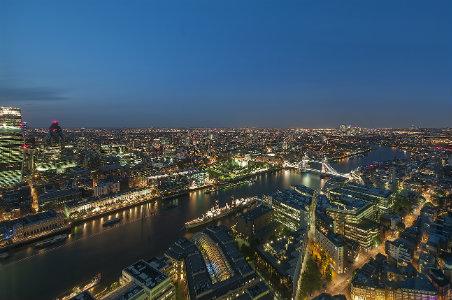
The Shangri-La Hotel, at The Shard, which opened in May, boasts floor-to-ceiling windows, the city’s highest cocktail bar and infinity pool, and unrivalled views of the London skyline from 1,016 feet above the South Bank of the Thames. Occupying floors 34 to 52 of the Renzo Piano-designed skyscraper, the Shangri-La is London’s first high-rise hotel, and the tallest in Western Europe. Its location, just behind City Hall, puts it within walking distance of Borough Market, Shakespeare’s Globe, Southbank Centre, and the Tower of London.
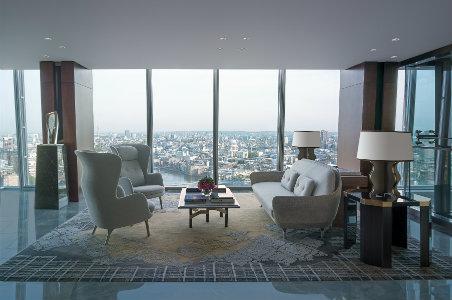
Visitors enter the hotel through a ground-floor lobby on St. Thomas Street, adjacent to the London Bridge tube station, where they’re welcomed by a small seating area and, off to the left, a self-dubbed “artisan deli” called LÁNG. Modelesque women draped in Asian silks check you in, hand you a cold towel, and introduce you to a porter who’ll whisk you and your luggage to your room by way of one of two express elevators that exit on the 35th floor. Here, you’ll change to a key-card-only access elevator up to the guestrooms, where your porter will acquaint you with your room, including automated climate control and blinds, a plush kimono, and a pair of binoculars for enjoying the view.
Rates: Guestrooms and suites (180 rooms are currently open, with another 22 opening by 2015) are priced by view. Of the guestrooms, the least expensive, at $799 during high season (Superior Shard Room), affords south-facing views; the most expensive, $1,050 (Iconic City View Room), gives you access to triple-aspect, 180-degree views of London’s key landmarks. Suites start at $2,690.
Rooms: All of the hotel’s guestrooms have custom beds adorned with Frette linens, free WiFi, flat-screen TVss, a Nespresso machine, and a complimentary pot of Chinese welcome tea. The marble bathrooms, replete with Acqua Di Parma toiletries, have heated floors, a TV in the mirror, and Toto Washlet toilets. With neutral-colored furniture, unremarkable wall art, and space-age swirly carpets, the décor is typical for the Hong Kong-based Shangri-La group; understated, almost bland. However, it only takes a single, outward glance to understand why: Every guestroom in the hotel has jaw-dropping views of London and beyond.
In an Iconic City View Room—definitely the one to book—this humbling panorama stretches from Buckingham Palace in the west to Greenwich’s Royal Observatory in the east, and everything in between, including the full trace of the Thames, St. Paul’s Cathedral, the Houses of Parliament, and bridges too numerous to count. To stay in a room with a view like this is a one-of-a-kind experience in London. (The Shard’s viewing deck doesn’t even come close.)

Drinks & Dining: LÁNG, on the ground floor, serves pastries, salads, and sandwiches, while TĪNG on the 35th floor offers a Modern British-meets-Asian menu featuring seasonal ingredients from nearby Borough Market. TĪNG’s lounge serves London’s highest afternoon tea; choose between classic English or Asian-inspired preparations. The 52nd-floor Champagne and cocktail bar, GŎNG, is the perfect spot for sundowners or late-night drinks from the creative craft cocktail list.
Health & Fitness: There is a 24-hour fitness center on level 52 as well as an infinity swimming pool with special children’s swimming hours. Spa treatments can be arranged in your room or in one of the spa residences.
Pros: Matchless views; superb service; exceptional restaurants and cocktail bar; nifty, high-tech bells and whistles in guestrooms.
Cons: A “currently being worked on” design flaw caused by glass wings that protrude from the corners of the building allows guests, with a turn of the head, to see into their neighbor’s room at night; décor may feel cold to some; restaurant, cocktail bar (and therefore elevators) often swell with hotel guests and non-hotel guests alike due to the popularity of the view.
Visit to London
15 Must-See Literary Sights in London
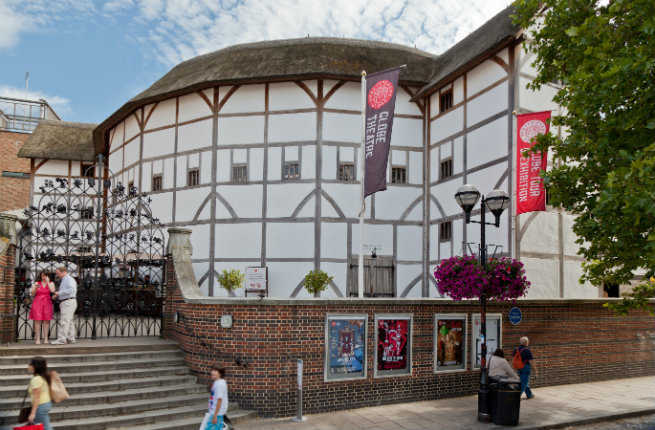
Few countries can lay claim to as many great writers as England, home to some of history’s most renowned scribes. Strolling around the capital, be sure to look for the blue plaques marking where people of importance, both literary and otherwise, have lived and worked throughout history, but for a more dedicated look at the city’s literary history, read on. From pubs to museums to libraries, here are 15 can’t-miss spots for literature lovers touring London.
by Abbey Chase
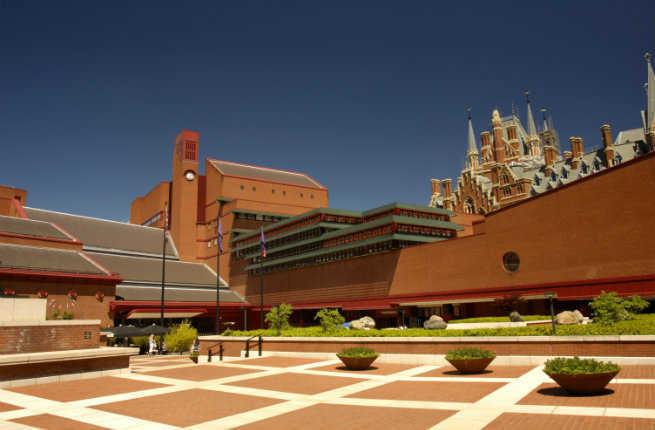
The British Library
What better place to begin a literary tour of London than at a library? Originally part of the British Museum, the Library moved to its current location on Euston Road in 1998, transferring its collection to the 1.2-million-square-foot space. With more than 150 million items in its collection, including manuscripts that date back 4,000 years, the British Library is the second largest library in the world, behind the Library of Congress. Literature fans should make a beeline for the Sir John Ritblat Gallery, just to the right of the main entrance, to view the Library’s stunning archival collection, which includes the Magna Carta, a Gutenberg Bible, original copies of Beowulf, The Canterbury Tales, Jane Eyre, and Shakespeare’s First Folio, and select works from Jane Austen to the Beatles.

The George Inn
This Southwark pub dates back some 400 years, though it was virtually destroyed in the Great Fire of London in 1666, and stands as the last remaining galleried coaching in in London. Charles Dickens was a frequent visitor of The George Inn, and he even mentioned it in Little Dorrit (in chapter XXII). Shakespeare is also rumored to have frequented this pub, though this is largely speculation due to its proximity to the Globe. The George is now owned by the National Trust to maintain the pub’s nostalgia-inducing, literary-steeped atmosphere.
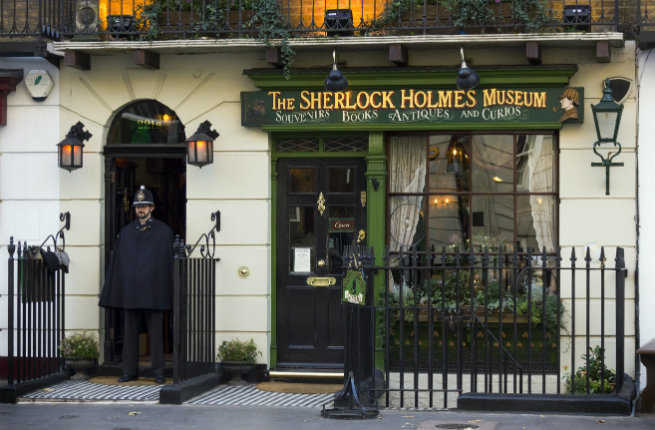
The Sherlock Holmes Museum
Though technically located between 237 and 241 Baker Street, The Sherlock Holmes Museum proudly declares its address as 221b Baker Street in honor of Sir Arthur Conan Doyle’s famous detective. This homage to one of literature’s most famous sleuths can be found just off the southwest corner of Regent’s Park, and fans of all things Holmes will enjoy the small museum filled with period exhibits, Holmes memorabilia, and a mock-up of the detective’s study looking onto the street. Even if you decide to opt out of the museum tour ($16), this spot is still worth a visit for the outstanding gift shop, in-character staff, and Baker Street tube station, covered in Holmes’ silhouettes.

Shakespeare’s Globe
In a city full of landmarks, the Globe Theatre is one of London’s most iconic spots. While the modern reconstruction is not even 20 years old, the recreation of the 1599 theatre has been painstakingly modeled after the original space that Lord Chamberlain’s Men called home. The original Globe caught fire in 1613 during a performance of Henry VIII and was rebuilt the following year, before the Puritans shuttered it in 1642. For a true Shakespearean experience today, view a performance from the pit, the standing-room space directly in front of the stage; this season, the Globe is staging Antony and Cleopatra, Julius Caesar, King Lear, and The Comedy of Errors, as well as other non-Shakespeare productions. Alternatively, take a tour of the theatre.
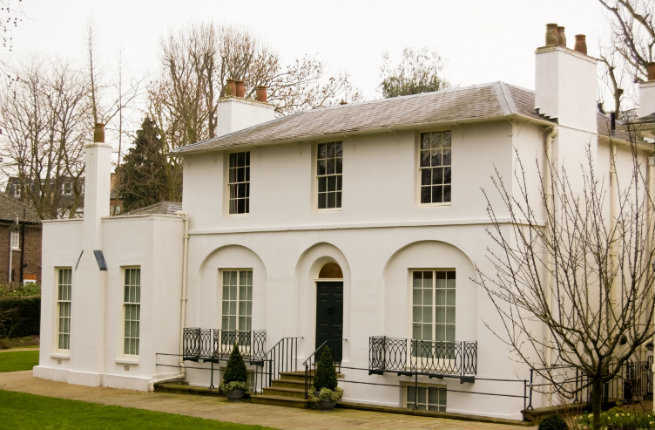
Keats House
John Keats lived in this house on the edge of Hampstead Heath with his friend Charles Brown for almost two years, where he is said to have written “Ode to a Nightingale.” Keats moved to Italy in 1820 as his tuberculosis deteriorated, leaving his fiancée Fanny Brawne in England, and the house was inhabited by various London celebrities throughout the rest of the 19th century. Today, the Keats Museum is housed in the adjacent coach house and showcases a collection of Keats’ letters, the engagement ring Keats gave Brawne, and a copy of the poet’s death mask. The house also hosts a variety of literary events, as well as guided walks around the neighborhood.
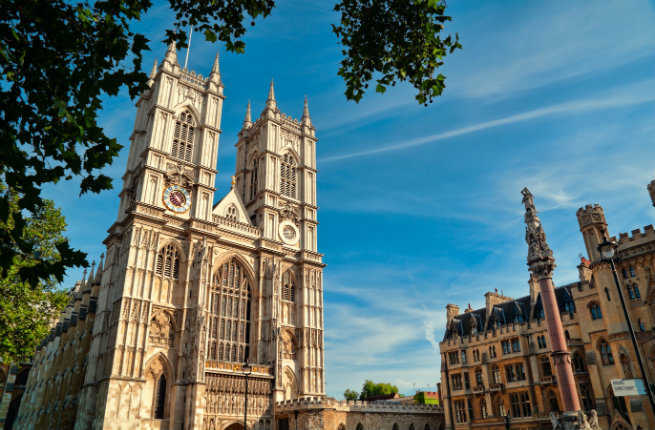
Poets’ Corner, Westminster Abbey
The list of famous people interred in Westminster Abbey is lengthy, to put it mildly, and Poets’ Corner in the South Transept serves as a kind of literary hall of fame. Geoffrey Chaucer’s tomb was placed here in 1556 as a kind of happy accident (he was recognized for his service as Clerk of Works, not as an author) that created Poets’ Corner, which has since served as a memorial to Britain’s greatest cultural contributors. Henry Francis Clay, Charles Dickens, Thomas Hardy, Rudyard Kipling, Laurence Olivier, Edmund Spenser, and Alfred Tennyson are all interred here, and there are also several monuments commemorating famous writers whose remains are elsewhere, most notably Shakespeare, who is buried in Stratford-upon-Avon.
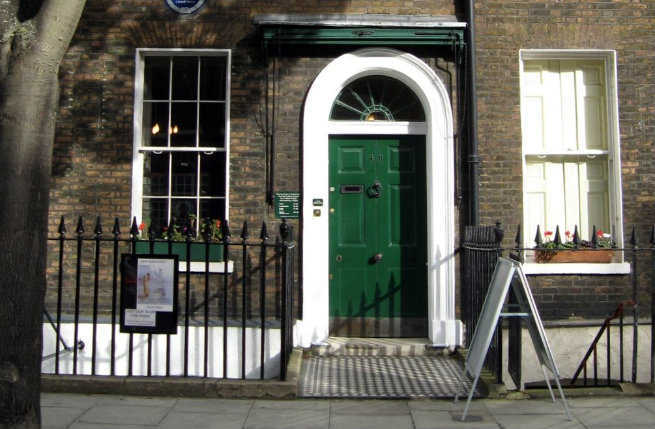
Charles Dickens Museum
Like Keats and his Hampstead residence, Dickens only lived in this house on Doughty Street for two years, but as the site where he penned Oliver Twist and Nicholas Nickelby, this spot in Holborn is worth visiting. When plans to demolish the house were drawn up in 1923, the Dickens Fellowship took over the site and turned it into a museum showcasing a collection of Dickens’ memorabilia, including paintings, manuscripts, furniture, and other items that belonged to the author. You can tour the museum at your own pace or sign up for one of the Costumed Tours on the third Saturday of every month, in which a period-clad Dickens’ housemaid gives you a tour of the residence.
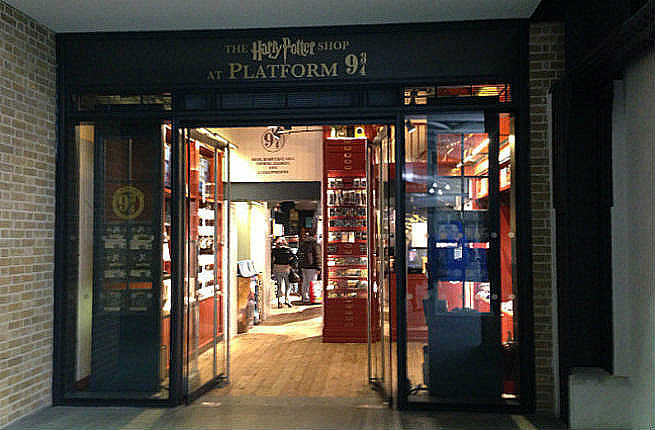
Platform 9 ¾, King’s Cross Station
For something with a little more whimsy, take the Tube to the bustling King’s Cross Station and look for the famous platform to board the Hogwarts Express. Follow signs for platform 9 and you’ll see the trolley disappearing into the wall off to the side (there is a roped queue and an attendant there almost all the time, so it will be hard to miss). After you take a picture with a Hogwarts scarf of your choice, head to the gift shop around the corner to stock up on Harry Potter souvenirs and trinkets.
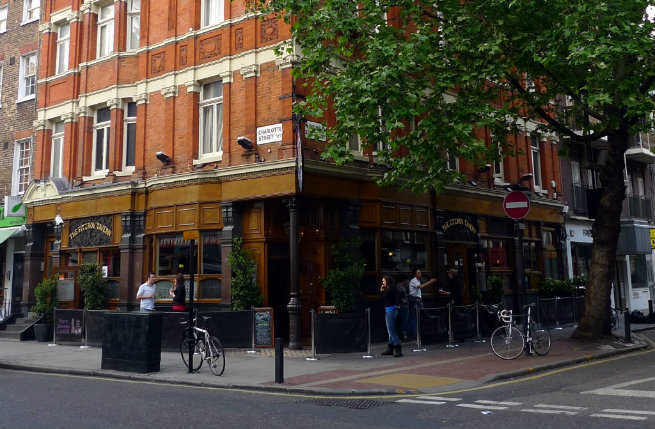
Fitzroy Tavern
A pub so famous it gave the London neighborhood its name (Fitzrovia), the Fitzroy Tavern (16 Charlotte Street) was once a favorite hangout of George Orwell, George Bernard Shaw, and Richard Attenborough. Legend has it that Welsh poet Dylan Thomas used to give out poetry written on beer mats to any woman who asked while drinking here. Pictures on the walls honor past regulars at the Fitzroy and while the crowd today is less literary than during the mid-20th century, the locals still lend this pub an authentic vibe.
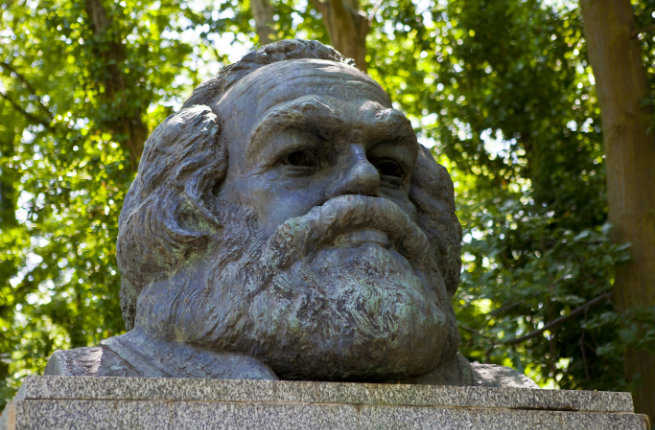
Highgate Cemetery
This 37-acre cemetery in London was created in 1839 as one of the “Magnificent Seven” cemeteries built to alleviate the burden on cemeteries within the city, and Highgate became one of the most sought-after plots in Victorian London. Amidst the lavish catacombs, chapels, and Egyptian-style tombs, you can view the graves of Karl Marx, Henry Gray (author of Gray’s Anatomy), and George Elliot, as well as many of Charles Dickens’ family members and several prominent English actors. The cemetery has been referenced in several modern films, TV shows, and novels, and gained prominence in the 1970s due to rumored supernatural activity on the premises. Note that access to the West Cemetery is only allowed on an accompanied tour.
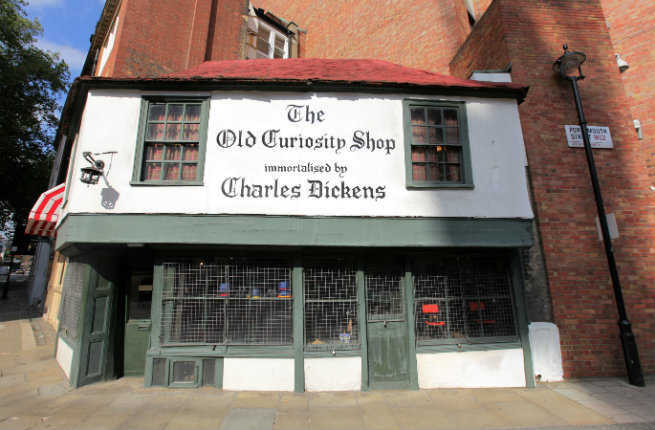
The Old Curiosity Shop
Built from the recycled wood of old ships, The Old Curiosity Shop (13-14 Portsmouth Street) is one of a select group of places in London that can say it survived both the Great Fire of 1666 and aerial bombing during World War II. The 16th-century shop can still be found near the London School of Economics and while the relationship between this particular store and Dickens’ The Old Curiosity Shop is unclear, the London landmark is considered by many to be the inspiration for the novel with its tilting ceilings, wobbly floorboards, and creaking staircase. Dickens lived in the Bloomsbury area near this shop and is said to have visited on multiple occasions. Stop in for a bit of history or to pick up a pair of shoes.

Ye Olde Cheshire Cheese
With a list long list of illustrious literary regulars, Ye Olde Cheshire Cheese (145 Fleet Street) is a must-see for any literature fan passing through the city. Dr. Samuel Johnson moved next door to the pub in 1748 (though there is, in fact, no evidence of him ever visiting), but Mark Twain, Alfred Tennyson, Sir Arthur Conan Doyle, William Makepeace Thackerary, G.K. Chesterton, W.B. Yeats, Voltaire, James Boswell, and Ben Jonson are all said to have passed through at one point, if not attended regularly; Dickens’ even alluded to it in A Tale of Two Cities. This rickety Fleet Street pub is still a great place to grab a pint and relax in the historic atmosphere.
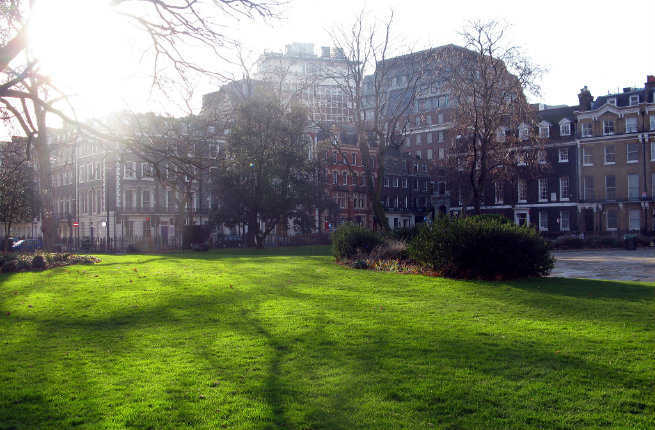
Bloomsbury
A neighborhood steeped in literary history, Bloomsbury is an easy place to while away an afternoon exploring its quiet streets. The Bloomsbury Square garden was a meeting place for writers during the 1920s and ’30s known as the Bloomsbury Group, a highly influential group of writers that counted Virginia Woolf, John Maynard Keynes, and E.M. Forster as members. The British Museum, the former home of the British Library, is nearby, and W.B. Yeats, Charles Dickens, T.S. Eliot, and Bram Stoker all lived in the area at one point. Keep an eye out for the blue plaques marking important historical spots as you stroll around the neighborhood, or take a guided literary walking tour of Bloomsbury.
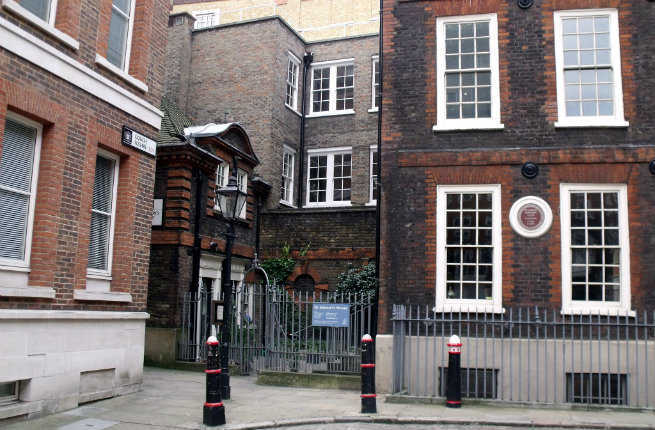
Dr. Johnson’s House
Samuel Johnson is perhaps most famous for his publication of A Dictionary of the English Language in 1755, a watershed moment in the history of the English language, and fans of the famous lexicographer and writer can visit his house not 500 feet from Ye Olde Cheshire Cheese. Johnson lived at this house on 17 Gough Square for 11 years, during which time he compiled his Dictionary, and today visitors can view first printings of Johnson’s work and his personal pink tea set. Famous for his sociable disposition, Johnson was known for being a great host and many famous writers passed through here; some of their memorabilia is on display in the house today.
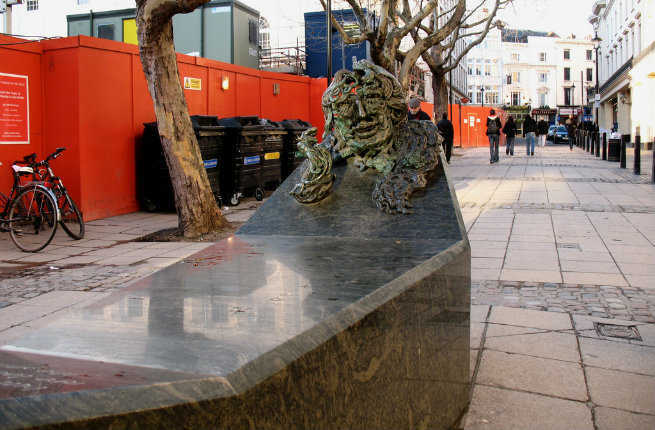
‘A Conversation With Oscar Wilde’
The Irish poet and playwright moved to England in 1878 and took up residence at 44 Tite Street Chelsea in 1881. Though he died in Paris, Wilde spent much of his life in the English capital and wrote many of his famous works while living there. Fans of Wilde should seek out A Conversation With Oscar Wilde, a sculpture on Adelaide Street northeast of Trafalgar Square. The somewhat abstract sculpture, unveiled in 1998, shows a whimsical Wilde with a quote from Lady Windermere’s Fan inscribed beneath: “We are all in the gutter, but some of us are looking at the stars.”
-
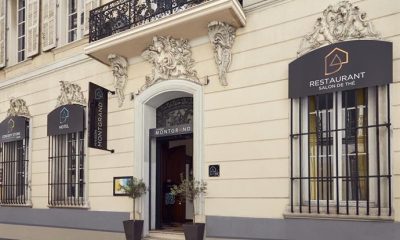
 France6 years ago
France6 years agoHotel Maison Montgrand – Vieux Port
-
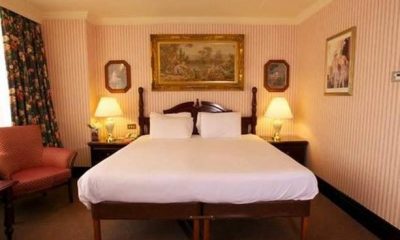
 United Kingdom6 years ago
United Kingdom6 years agoBritannia International Hotel Canary Wharf
-
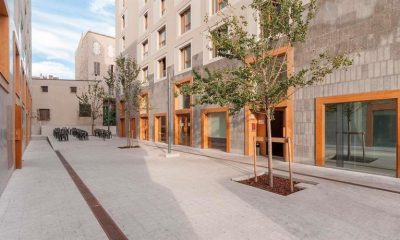
 France6 years ago
France6 years agoAppart’City Marseille Euromed
-
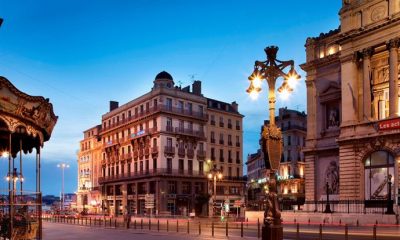
 France6 years ago
France6 years agoEscale Oceania Marseille Vieux Port
-
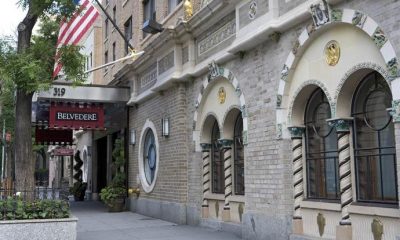
 USA6 years ago
USA6 years agoThe Belvedere
-
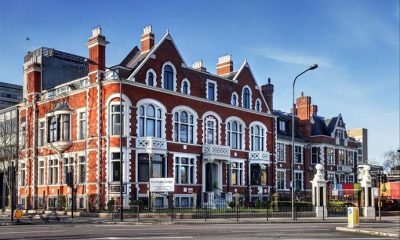
 United Kingdom6 years ago
United Kingdom6 years agoBest Western London Peckham Hotel
-
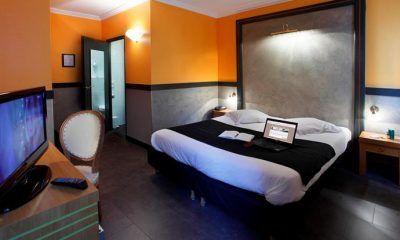
 France6 years ago
France6 years agoAdonis Marseille Vieux Port
-
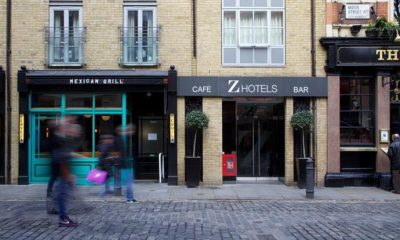
 United Kingdom6 years ago
United Kingdom6 years agoThe Z Hotel Soho


